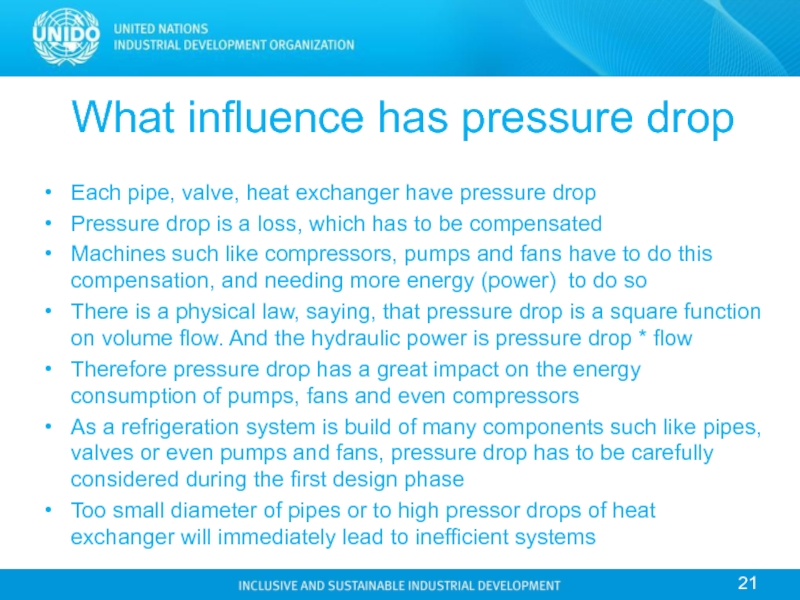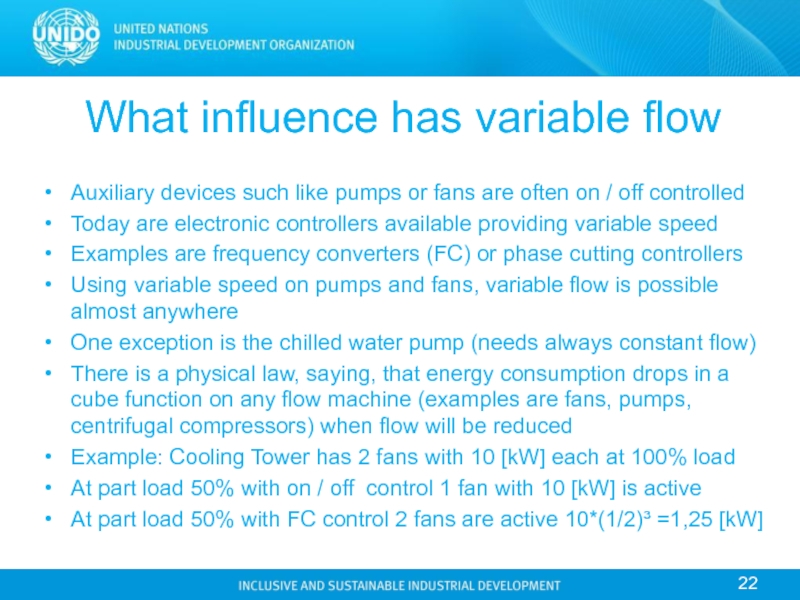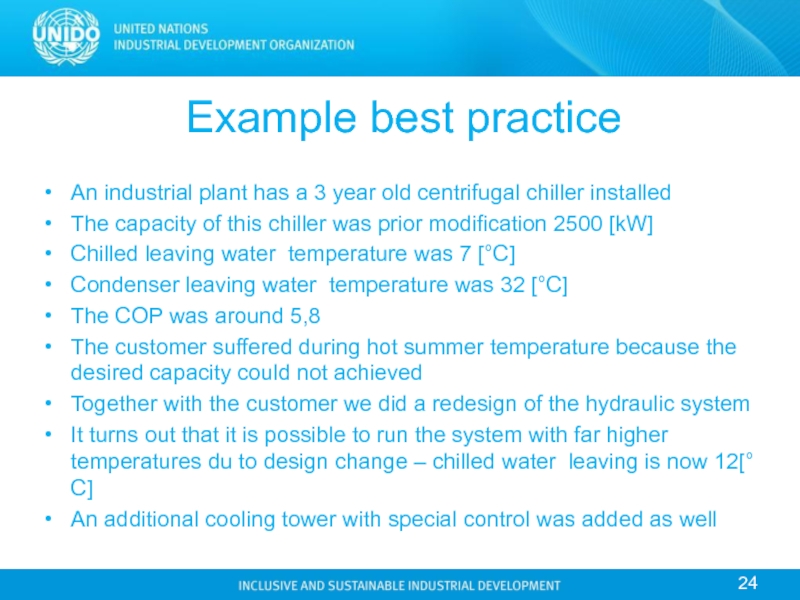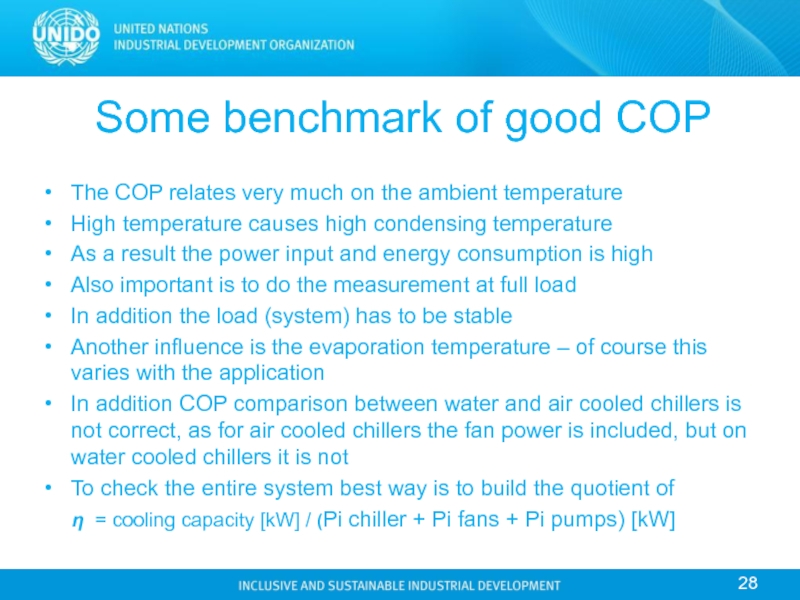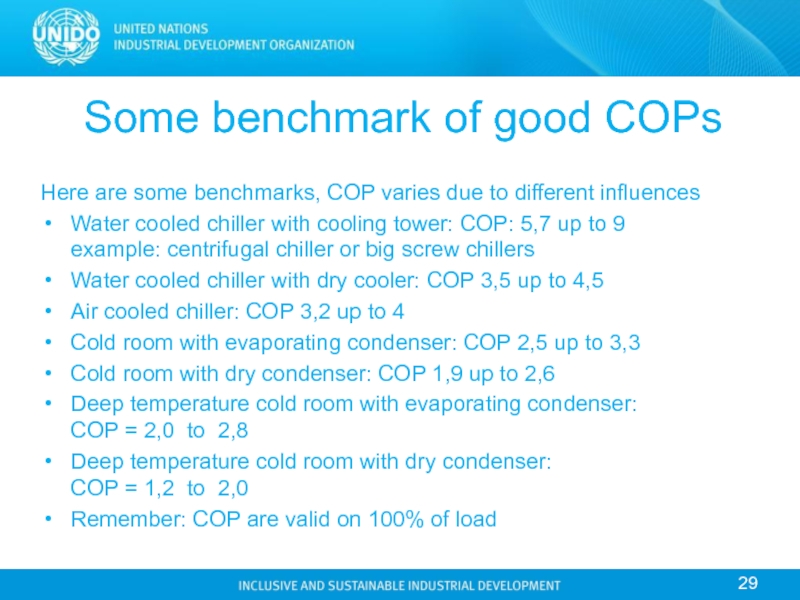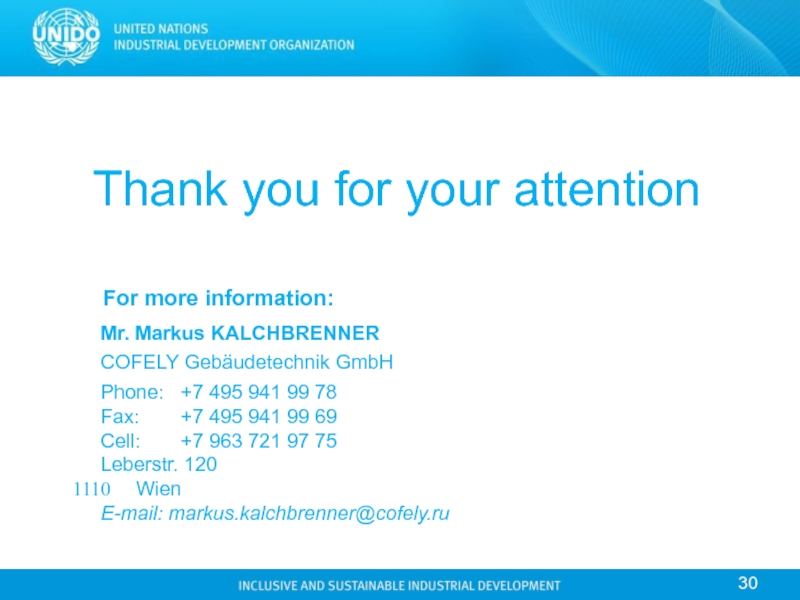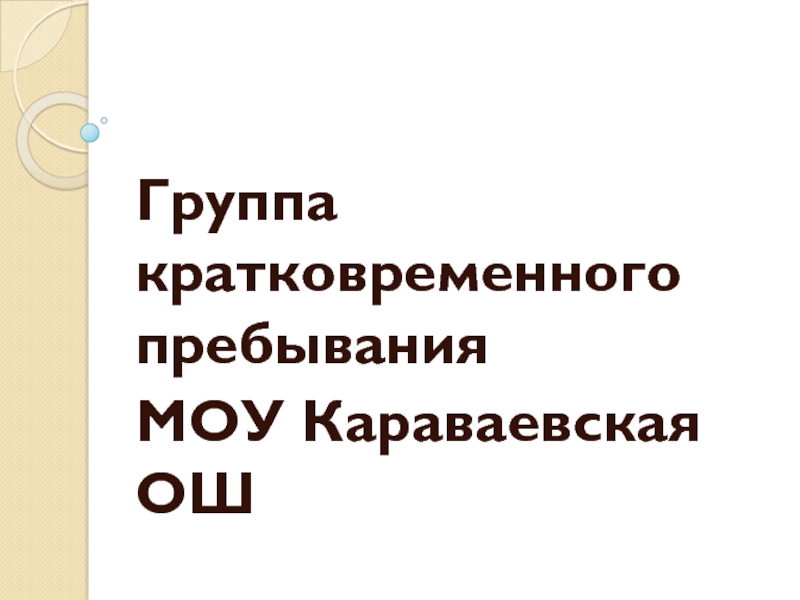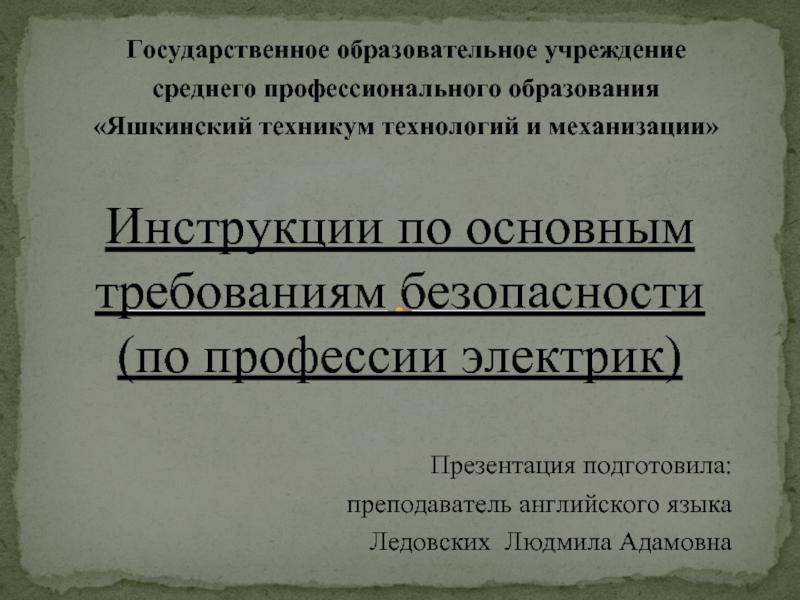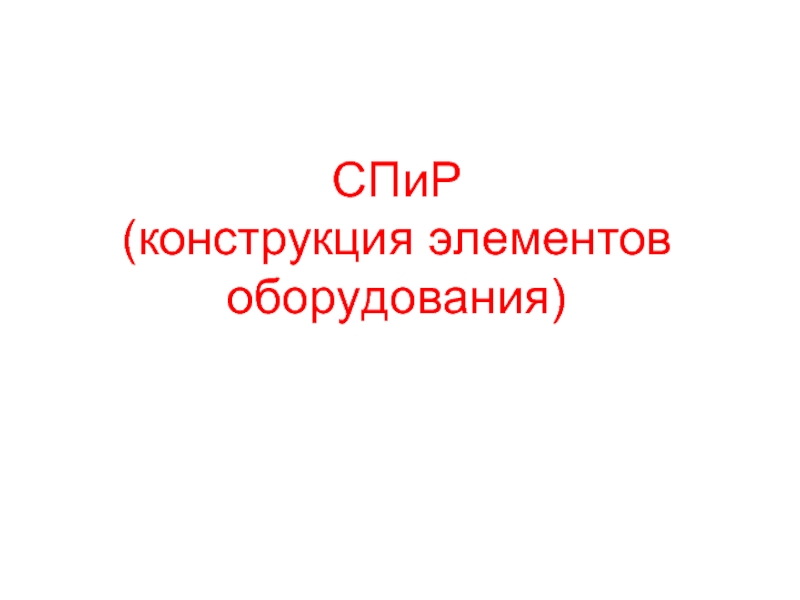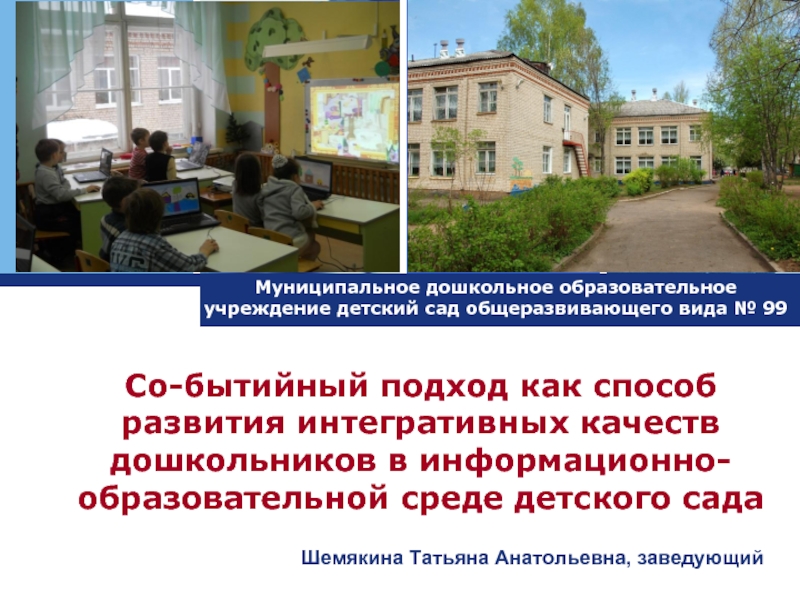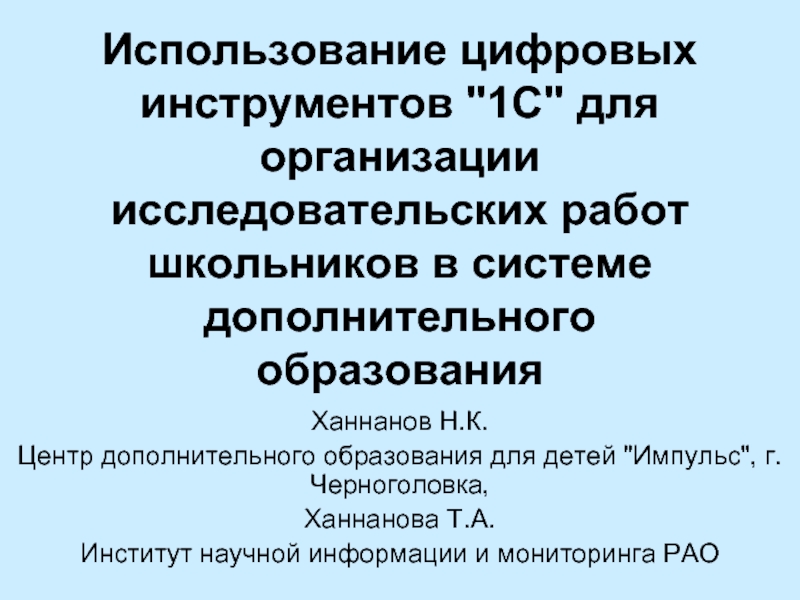- Главная
- Разное
- Дизайн
- Бизнес и предпринимательство
- Аналитика
- Образование
- Развлечения
- Красота и здоровье
- Финансы
- Государство
- Путешествия
- Спорт
- Недвижимость
- Армия
- Графика
- Культурология
- Еда и кулинария
- Лингвистика
- Английский язык
- Астрономия
- Алгебра
- Биология
- География
- Детские презентации
- Информатика
- История
- Литература
- Маркетинг
- Математика
- Медицина
- Менеджмент
- Музыка
- МХК
- Немецкий язык
- ОБЖ
- Обществознание
- Окружающий мир
- Педагогика
- Русский язык
- Технология
- Физика
- Философия
- Химия
- Шаблоны, картинки для презентаций
- Экология
- Экономика
- Юриспруденция
Refrigerant systems and their energy performance презентация
Содержание
- 1. Refrigerant systems and their energy performance
- 2. What is efficiency Efficiency is the
- 3. Definition of efficiency COP In the
- 4. Conversion factor US units conversion
- 5. Definition of efficiency - EER In
- 6. Measuring of efficiency - EER The
- 7. Part Load Efficiency ESEER EER is
- 8. Definition ESEER
- 9. Definition IPLV The IPLV stands for
- 10. Simple Methods of Measuring COP A
- 11. Measuring Pressure on Low and High Side
- 12. Gaining the evaporating temperature 2rd step:
- 13. Gaining the Condensing Temperature 3rd step:
- 14. Calculation of COP 4th step: calculation
- 15. Measuring and monitoring entire systems On
- 16. Monitoring Devices Usually most of the
- 17. International Systematical Energy Management Standard
- 18. What influences the efficiency of refrigeration systems
- 19. What influence has the evaporator
- 20. What influence has the condenser
- 21. What influence has pressure drop
- 22. What influence has variable flow
- 23. What influence has maintenance And
- 24. Example best practice An
- 25. Example best practice
- 26. Example best practice
- 27. Example best practice After
- 28. Some benchmark of good COP The
- 29. Some benchmark of good COPs Here
- 30. Thank you for your attention Mr. Markus
Слайд 1Refrigerant systems and their energy performance
What is efficiency Page 2
COP, EER,
Some benchmark of good COP Page 10 to 11
Simple method of measuring COP Page 12 to 16
Measuring and monitoring entire systems Page 17 to 19
What influences the efficiency of systems Page 20 to 26
Example best practice Page 26 to 30
Слайд 2What is efficiency
Efficiency is the relation between output and input
In the
In HVAC an refrigeration industry output power is always thermal
Input power is either electrical or mechanical, except absorption and adsorption chiller which are not scope of this presentation
In HVAC and refrigeration industry Efficiency = cooling capacity [kW] / power input [kW]
Слайд 3Definition of efficiency COP
In the HVAC and refrigeration industry existing different
Most common and worldwide widely used is the COP
COP is an abbreviation and stands for Coefficient Of Performance COP = cooling capacity [kW] / power input [kW] and as valid for full load (100% cooling capacity) only
In the USA COP is sometimes given as Efficiency = kW/ton = power input [kW] / cooling capacity [tons] used in content with big chillers and refrigeration system or even as used small systems (residential units) COP = cooling capacity [BTU/h] / (power input [kW] * 3413) or in content with heat pumps COP = condensing capacity / [BTU/h] / (power input [kW] * 3414)
Слайд 4Conversion factor US units
conversion factor for power units
10.000 BTUh =
1 kW = 3412.142 BTUh
12000 BTUh = 1 ton = 3,513725 kW
1 kW = 0,284345 ton Sometimes BTUh is written as BTU/h
conversion factor for power units
10.000 BTU = 2,9307107 kWh
10.000 BTU = 2521,644 kcal
1 kWh = 3412.142 BTU
1 kcal = 3,96567 BTU
Слайд 5Definition of efficiency - EER
In Europe the same performance figure is
EER is an abbreviation and stands for Energy Efficient Ratio
EER = cooling capacity [kW] / power input [kW] and as valid for full load (100% cooling capacity) only
The EER is in Europe always used for any kind of cooling application EER = cooling capacity [kW] / power input [kW]
In Europe the COP is used to specify the performance of heat pumps COP = condensing capacity [kW] / power input [kW] this is equal to COP = (cooling capacity + power input [kW]) / power input [kW]
Слайд 6Measuring of efficiency - EER
The EER was established by EUROVENT
EUROVENT is
EUROVENT provides the test results online link to the main page: www.eurovent-certification.com
The test results for chillers are always given for leaving water temperature of 7[°C] with 12[°C] water return
In case of air cooled chillers: ambient air intake is 35 [°C]
In case of water cooled chillers: leaving condense water at 35 [°C] and entering condenser water at 30 [°C]
EUROVENT provides an good opportunity to compare efficiency of chillers, but only at the given temperatures
Слайд 7Part Load Efficiency ESEER
EER is only valid for part load
Chillers usually
Therefore the part load performance is much closer to reality and EUROVENT decided to certify, together with full load efficiency, an average annual part load efficiency of chillers
A study partly funded by the European Commission through SAVE Program was performed and an index called ESEER – European Seasonal Energy Efficiency Ratio- has been defined
ESEER is similar to IPLV (Integrated Part Load Value) - used by ARI in USA, takes into account several parameters in order to establish an average use of chillers throughout Europe: weather data, building load characteristics, operational hours etc.
Слайд 8Definition ESEER
ESEER is basically the summarizing of the EER at 3%,
ESEER is an assumption for buildings but may not be correct for industrial application as load doesn’t drop with ambient temperature, however it is a possibility to compare efficiency of chillers on their quality
Слайд 9Definition IPLV
The IPLV stands for Integrated Part Load Value
The idea is
There are different standards for water or air cooled chillers
The definitions were made by AHRI and are based temperatures measured in Fahrenheit and flow rate measured in gallons per minute per ton.
Similar to the ESEER there are COP Figures for 25%, 50%, 75% and 100 % of load. They are called A, B, C, D
The Formula for calculation is: IPLV (or NPLV) = 0.01A+0.42B+0.45C+0.12D
If a chiller is designed to operate at different conditions as IPLV definition, the part load value is the called NPLV, which stands for: Non Standard Part Load Value
Слайд 10Simple Methods of Measuring COP
A simple method to measure efficiency by
This could be done following the next 4 steps.
Слайд 11Measuring Pressure on Low and High Side
1st step: measure evaporating and
Слайд 12Gaining the evaporating temperature
2rd step: from the refrigerant table taking the
read the relative pressure 3,043 bar from the manometer and add 1 bar for absolute pressure
Слайд 13Gaining the Condensing Temperature
3rd step: from the refrigerant table taking the
read the relative pressure 18,974 bar from the manometer and add 1 bar for absolute pressure
Слайд 14Calculation of COP
4th step: calculation of COP
te: take -12 [°C] from
te: take 44 [°C] from the last slide before
Enter in this formula assuming medium range compressor F=0,5:
F represents the exergetic efficiency of the compressor. COP = (te [°C] + 273,15) / ((tc [°C]+273,15) - (te [°C])+273,15) * F COP = (-12 + 273,15) / ((44 + 273,15) - ((-12 + 273,15)) * 0,5 = 2,3
Слайд 15Measuring and monitoring entire systems
On complex systems it make sense to
For example a chiller plant with three chiller and three cooling towers
The overall energy consumption comes from:
the chiller (three piece)
the cooling tower fans (three piece)
the condenser pumps (three piece)
the evaporator pumps (three piece)
To know how the energy flows it is necessary to install measurement instruments
All the measurement instruments are linked together in a network
In most cases they are communicating using a bus system
Very common is the M-Bus
Слайд 16Monitoring Devices
Usually most of the devices are electricity meters,
measuring the actual
For a chiller plant even heat meter are necessary
For the example on the last page we would need
the chiller (2 heat meter, and optional one electricity meter )
the cooling tower fans (3 electricity meter)
the condenser pumps (3 electricity meter)
the evaporator pumps (3 electricity meter)
All this meters are continuously measuring, counting (storing) the actual power [kW], transferring the information to central base unit (e.g. a server system). A software provides different tools to analyze the energy consumption and efficiency of the plant
Слайд 17International Systematical Energy Management Standard
ISO 50001 is the international standard how
It is based on the individual energy flow (gas, electricity, hot water, steam) of a plant, considering efficiency
ISO50001 covers beneath measurement, optimization of production and process, machines in plant, management and organization
even the purchasing department – it should not only look for the cheapest solution but should consider the entire cost of a new system, considering, cost of installation, energy consumption, service & maintenance cost, disassembly and disposal at life cycle end
Слайд 18What influences the efficiency of refrigeration systems
Evaporating temperature
Condensing temperature
Pressure drop
pipework including valves
heat exchanger
Variable flow of:
fluids (water, water/glycol, others)
vapor and gases (air, refrigerant)
Control system (quality of control design)
Service and maintenance
Слайд 19What influence has the evaporator
Reducing the evaporating temperature by 1
Depending on the refrigerant and system COP drops between 1,5 % and 3 %
Example refrigeration:
Rising the evaporating temperature from -35 [°C] to -30 [°C] provides a better COP between 10% and 15%
Example chiller:
Rising the evaporating temperature from 2 [°C] to 5 [°C] provides a better COP of app. 10%
A good overall design is considering this effect
The system temperature should be close as possible to the evaporating temperature –> the approach temperature should be as small as possible
Слайд 20What influence has the condenser
Reducing the condensing temperature by 1
Depending on the refrigerant COP rises between 2 % and 3 %
Example Refrigeration:
Lowering the condensing temperature from 50 [°C] to 45 [°C] provides a better COP between 12% and 15%
Example chiller:
Lowering the evaporating temperature from 40 [°C] to 35 [°C] provides a better COP of app. 15%
A good overall design is considering this effect
The media outlet temperature of the condenser should be close as possible to the coolant media temperature (air, water, water/glycol –> the approach temperature should be as small as possible
Слайд 21What influence has pressure drop
Each pipe, valve, heat exchanger have
Pressure drop is a loss, which has to be compensated
Machines such like compressors, pumps and fans have to do this compensation, and needing more energy (power) to do so
There is a physical law, saying, that pressure drop is a square function on volume flow. And the hydraulic power is pressure drop * flow
Therefore pressure drop has a great impact on the energy consumption of pumps, fans and even compressors
As a refrigeration system is build of many components such like pipes, valves or even pumps and fans, pressure drop has to be carefully considered during the first design phase
Too small diameter of pipes or to high pressor drops of heat exchanger will immediately lead to inefficient systems
Слайд 22What influence has variable flow
Auxiliary devices such like pumps or
Today are electronic controllers available providing variable speed
Examples are frequency converters (FC) or phase cutting controllers
Using variable speed on pumps and fans, variable flow is possible almost anywhere
One exception is the chilled water pump (needs always constant flow)
There is a physical law, saying, that energy consumption drops in a cube function on any flow machine (examples are fans, pumps, centrifugal compressors) when flow will be reduced
Example: Cooling Tower has 2 fans with 10 [kW] each at 100% load
At part load 50% with on / off control 1 fan with 10 [kW] is active
At part load 50% with FC control 2 fans are active 10*(1/2)³ =1,25 [kW]
Слайд 23What influence has maintenance
And even service and maintenance has a
Dirty heat exchanger will dramatically lower the COP, a dirty condenser will lower the COP between 5% and 15%
The same is true for dirty or frozen evaporator
Clogged filter will increase the pressure drop of the system an will lead to much higher consumption
And even the compressor needs service to make it smooth running with a minimum of friction loss
Or belt driven devices, e.g. on cooling tower fans. If the belt is not stretched enough, the requires air flow is not given any more. As a result the condensing temperature is rising, and this leads to a worse COP
Слайд 24Example best practice
An industrial plant has a 3 year
The capacity of this chiller was prior modification 2500 [kW]
Chilled leaving water temperature was 7 [°C]
Condenser leaving water temperature was 32 [°C]
The COP was around 5,8
The customer suffered during hot summer temperature because the desired capacity could not achieved
Together with the customer we did a redesign of the hydraulic system
It turns out that it is possible to run the system with far higher temperatures du to design change – chilled water leaving is now 12[°C]
An additional cooling tower with special control was added as well
Слайд 26Example best practice
After design change COP is 7, after
Слайд 27Example best practice
After modification of:
hydraulic design
modification of the
installing of frequency converter
placing an additional cooling tower
and fine tuning of the control setup
average COP over the year is better than 8
kWh consumption of cooling tower dropped by 40%
and even water consumption dropped
instead of 2400 kW the chiller makes now 3000 kW
and even during this extreme summer with 40°C - no problem at all
Слайд 28Some benchmark of good COP
The COP relates very much on the
High temperature causes high condensing temperature
As a result the power input and energy consumption is high
Also important is to do the measurement at full load
In addition the load (system) has to be stable
Another influence is the evaporation temperature – of course this varies with the application
In addition COP comparison between water and air cooled chillers is not correct, as for air cooled chillers the fan power is included, but on water cooled chillers it is not
To check the entire system best way is to build the quotient of
η = cooling capacity [kW] / (Pi chiller + Pi fans + Pi pumps) [kW]
Слайд 29Some benchmark of good COPs
Here are some benchmarks, COP varies due
Water cooled chiller with cooling tower: COP: 5,7 up to 9 example: centrifugal chiller or big screw chillers
Water cooled chiller with dry cooler: COP 3,5 up to 4,5
Air cooled chiller: COP 3,2 up to 4
Cold room with evaporating condenser: COP 2,5 up to 3,3
Cold room with dry condenser: COP 1,9 up to 2,6
Deep temperature cold room with evaporating condenser: COP = 2,0 to 2,8
Deep temperature cold room with dry condenser: COP = 1,2 to 2,0
Remember: COP are valid on 100% of load
Слайд 30Thank you for your attention
Mr. Markus KALCHBRENNER
COFELY Gebäudetechnik GmbH
Phone: +7 495
Fax: +7 495 941 99 69
Cell: +7 963 721 97 75
Leberstr. 120
Wien
E-mail: markus.kalchbrenner@cofely.ru
For more information:
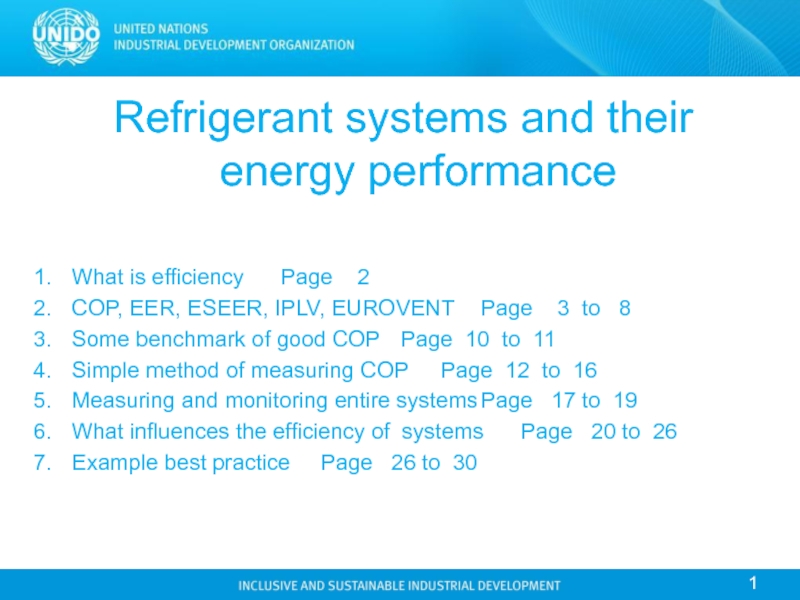
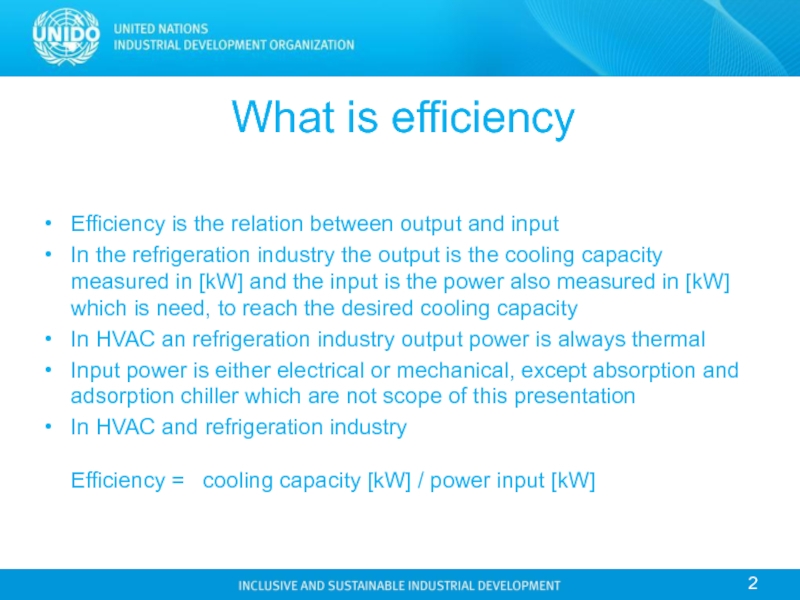
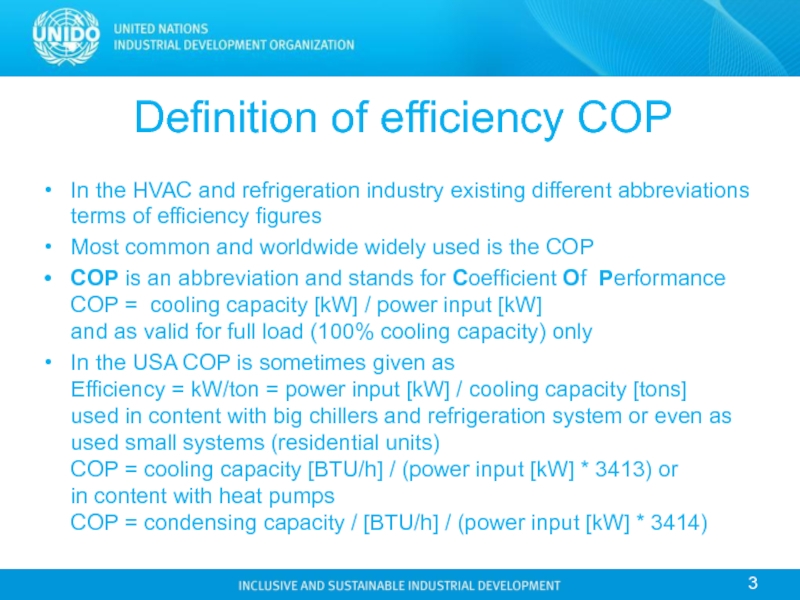
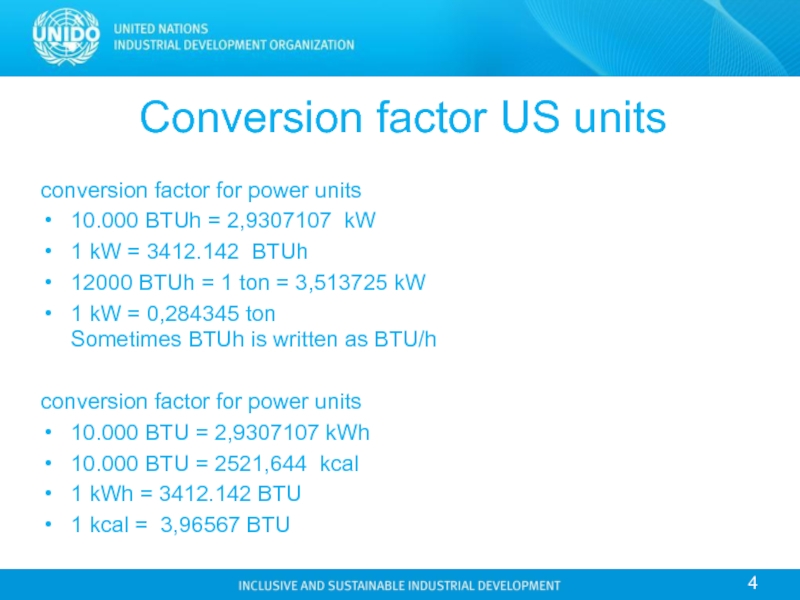
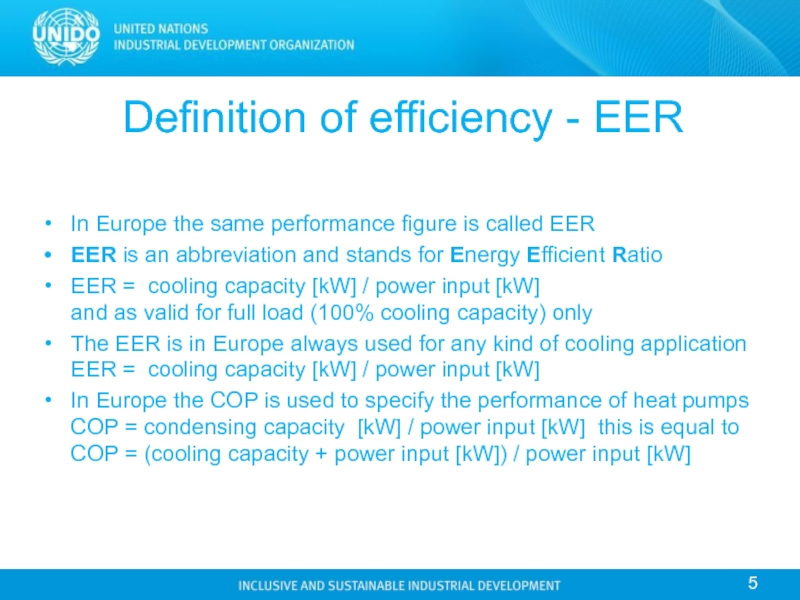
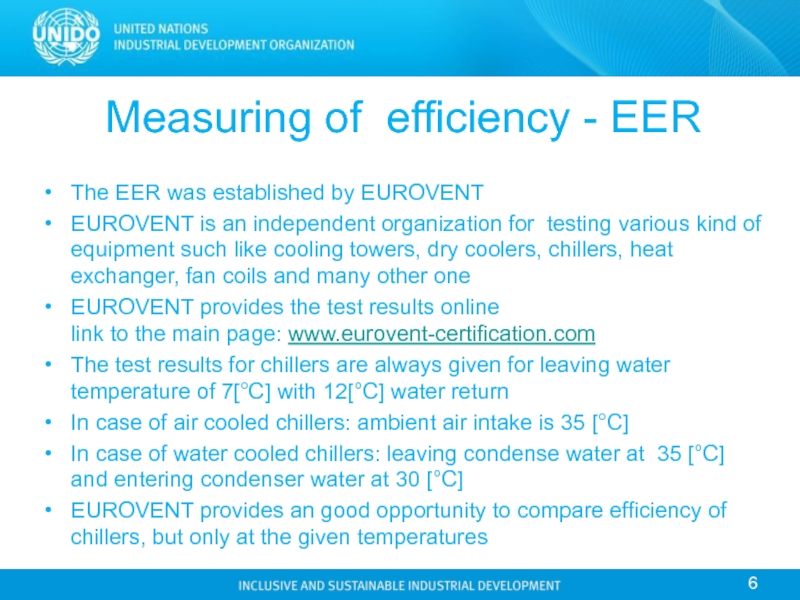
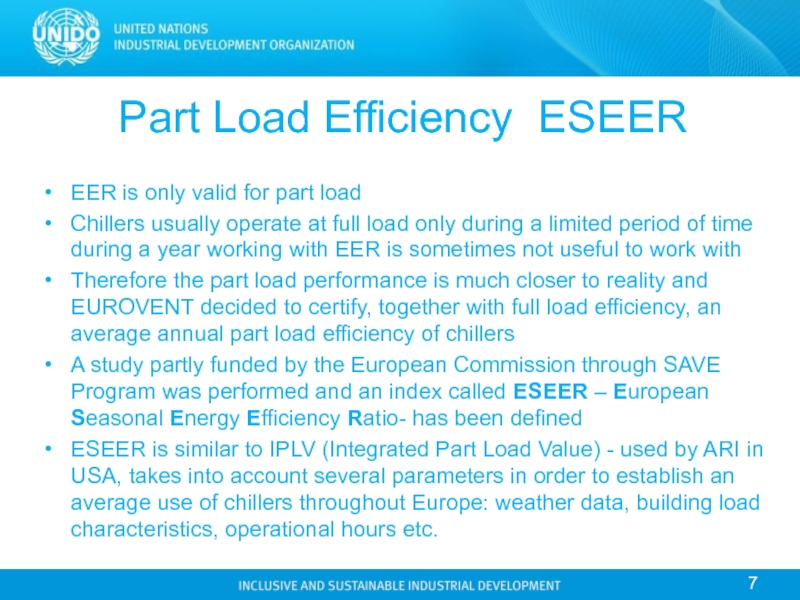
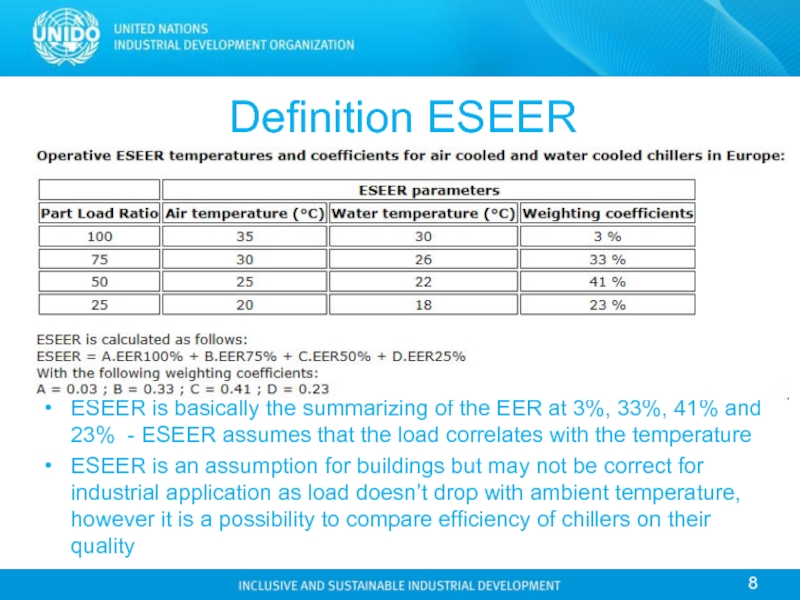
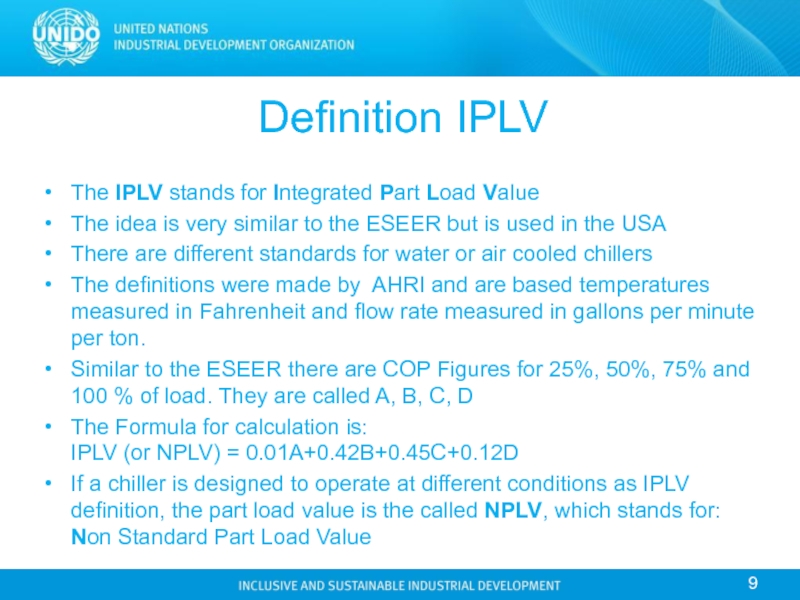

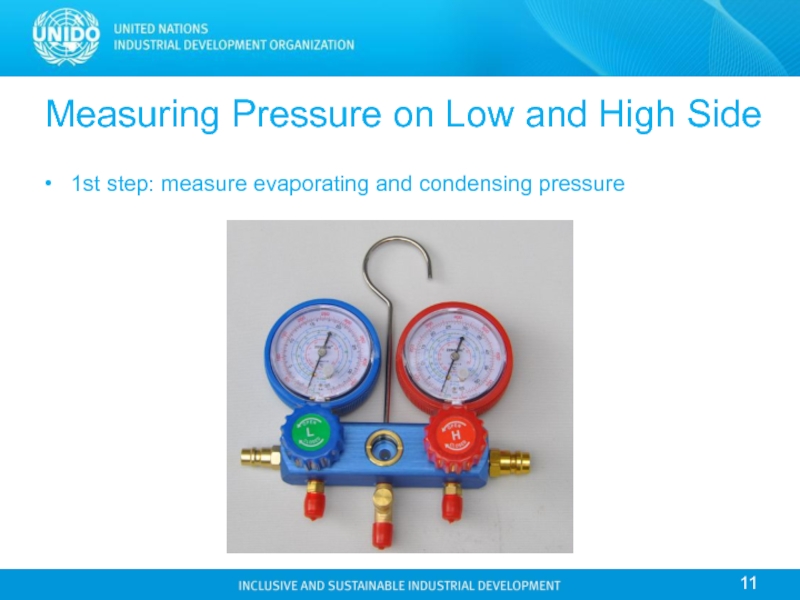
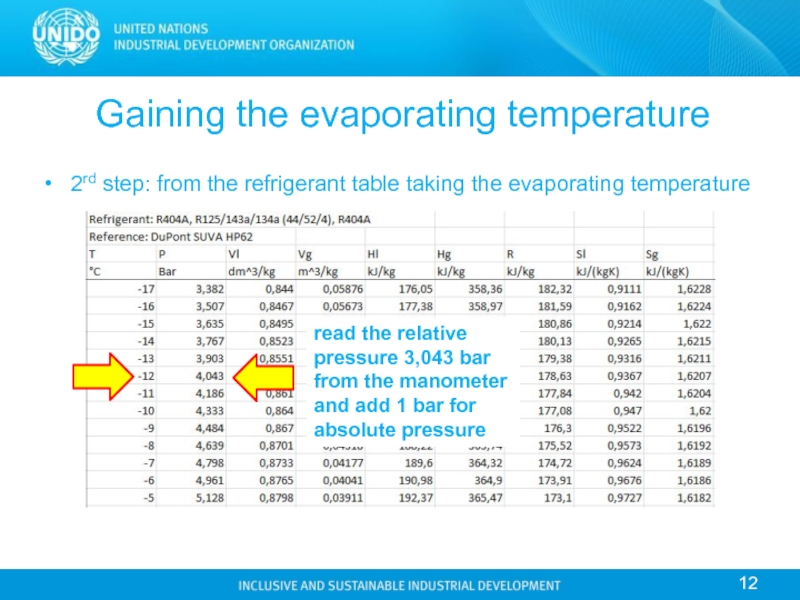

![Calculation of COP4th step: calculation of COPte: take -12 [°C] from the second last slidete:](/img/tmb/3/285702/29c9ba4c10346dff26e694b082b234f9-800x.jpg)
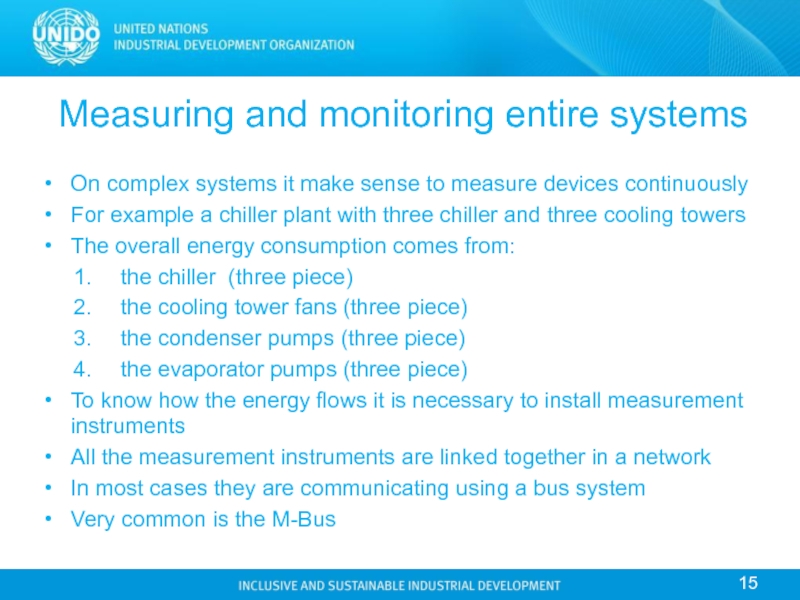
![Monitoring DevicesUsually most of the devices are electricity meters, measuring the actual power [kW] and](/img/tmb/3/285702/427e49c4302467587da55db72274bca4-800x.jpg)
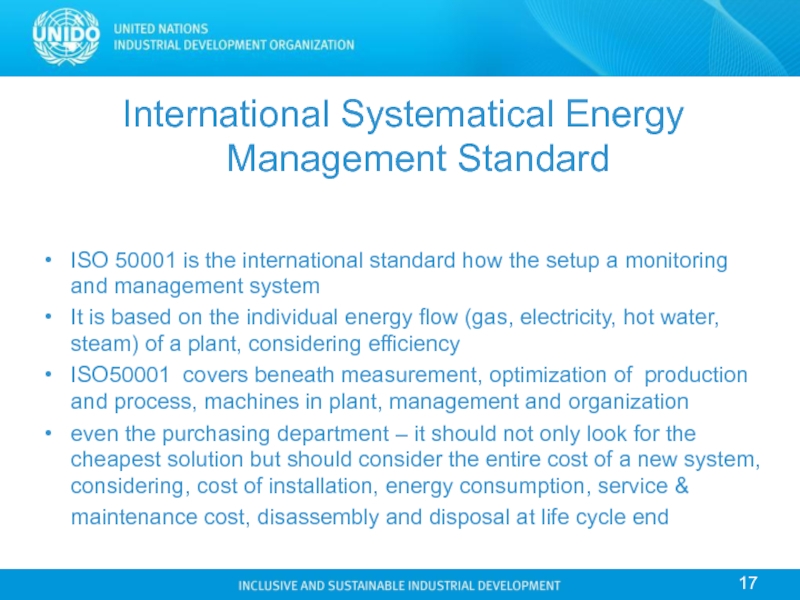
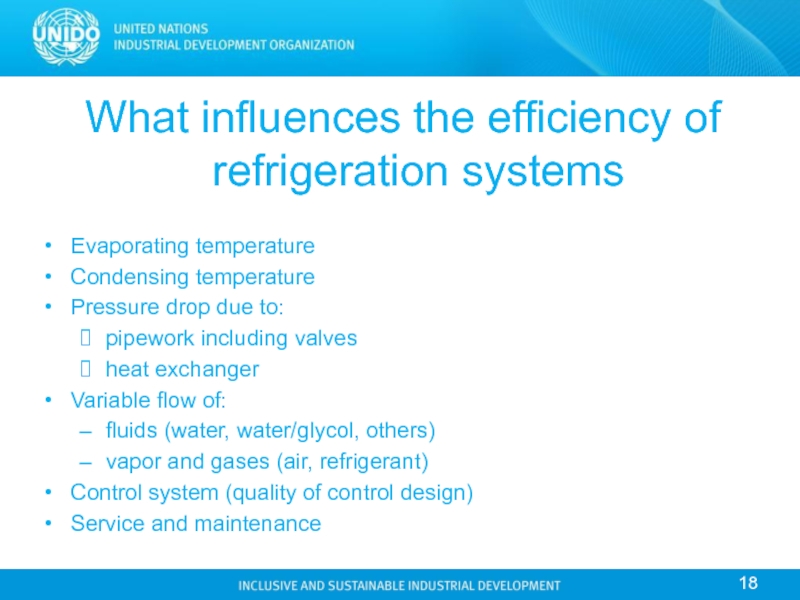
![What influence has the evaporator Reducing the evaporating temperature by 1 [°C] causes a worse](/img/tmb/3/285702/aa66d4ca70e0fcd3c9bd3382d1c881c7-800x.jpg)
![What influence has the condenser Reducing the condensing temperature by 1 [°C] offers a better](/img/tmb/3/285702/4a91c3e868f3ee4010b47c8de6d8c39e-800x.jpg)
